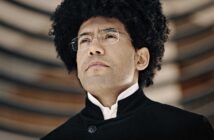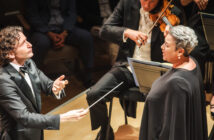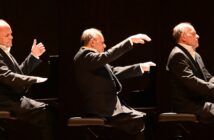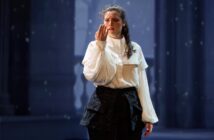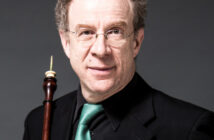Advertisement / Publicité
Man of La Mancha
Written by Dale Wasserman with music by Mitch Leigh and Lyrics by Joe Darion
Director: Robert McQueen
Choreographer: Marc Kimelman
Musical Director: Franklin Brasz
Miguel de Cervantes/Don Quixote: Tom Rooney
Sancho Panza: Steve Ross
Aldonza: Robin Hutton
Stratford Festival
Avon Theatre
June 20, 2014
Man of La Mancha opened on Broadway in 1965 and quickly entered the ranks of the classics of the American musical theatre. It is an inspired treatment of Cervantes’ Don Quixote story and continues to delight audiences all around the world. More than that, it is recognized as part of a genre that was created with commercial success in mind but is now taken seriously by non-profits far beyond Broadway. The Stratford Festival has been taking the American musical seriously for decades, but so too are opera companies everywhere. Chicago Lyric Opera, for example, presents a Rogers and Hammerstein musical every season. Can the Met be far behind?
Major composers over the years have taken an interest in the demented figure of Don Quixote, a man who believes he can right wrongs and defeat all the bad guys in this world. Richard Strauss was particularly successful with his tone poem Don Quixote, in which a cello soloist takes the role of “the knight of the woeful countenance.” The best-known operatic treatment is Don Quichotteby Jules Massenet. It is rarely performed but recently got an airing by the Canadian Opera Company (COC). Man of La Mancha has enjoyed success far greater than either one of them. Undoubtedly, one of its greatest assets is the hit tune “The Impossible Dream,” in which both words and music capture the very essence of the man Don Quixote and lend themselves to being repeated throughout the show as a leitmotif.
 |
| Dale Wasserman |
The other compelling ingredient is the book, the way in which Miguel de Cervantes’ early Seventeenth Century novel has been transformed into a stage play. It was Dale Wasserman’s invention to imagine a play within a play. We don’t know much about Cervantes life but Wasserman invents one that is highly credible. He imagines that Cervantes has been travelling through Spain with a small theatrical troupe when he is arrested and thrown into prison for something he did in his former line of a work as a tax collector. Cervantes is then set upon by the other prisoners and his magnus opus – the novel about Don Quixote, of course – is stolen. To save it from the flames, Cervantes improvises versions of the tales told in his novel to entertain his tormentors.
Cervantes ultimately wins over his fellow inmates and gets his manuscript back, but more than that, he inspires them to identify with Don Quixote and dream the impossible dream.
For some observers this is pure hokum and diminishes the literary quality of Cervantes’ original novel. Many critics feel that the message of the novel is far darker than that of the musical. Cervantes’ novel, they say, is really about a mentally ill old man who sets out on a fool’s errand. He understands nothing about what is really happening in the world around him and as he confronts supposed adversaries, he is repeatedly humiliated. It is a sad story that ends badly.<
/div>
Stratford has produced Man of La Mancha before. It was done in 1998 at the Festival Theatre with Juan Chioran remembered as a superb Cervantes/Don Quixote, but this latest version is altogether worthy of the nearly 50 years history of the show.
The sets by Douglas Paraschuk are massively conceived and suitably menacing for a musical that takes place entirely within the confines of a Seventeenth Century Spanish prison. In the background, we see the blades of a windmill turning slowly. They remind us of Don Quixote’s tilting at windmills, but also of the cruelty of the Spanish Inquisition, in which men are inexorably ground down, as millwheels grind grain to dust.
In front of the windmill is a raised drawbridge leading up to some massive doors. From time to time during the play, the doors are flung open at the top of the stairs, the drawbridge is lowered with the hideous sound of chains clanking, and soldiers descend into the prison to take away more wretches for torture and execution.
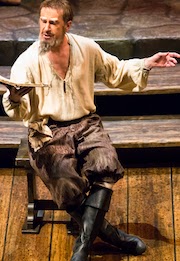 |
Tom Rooney as Miguel de Cervantes/Don Quixote
in Man of La Mancha. Photo by Erin Samuell. |
The dual roles of Cervantes and Don Quixote are an extraordinary challenge for any actor. Time and again, he must pass convincingly and almost imperceptibly from one personage to the other. He must be not only a superb actor but also a singer of some stature. Tom Rooney was ideal in the role. His acting was strong but never over the top and his singing was wonderful. As both actor and singer he makes a beautiful sound with his voice, but more than that, he is able to express both the heroic aspirations of the two characters and the melancholy of their ultimate failure.
Steve Ross as Sancho Panza provided an excellent foil for his two masters, and Robin Hutton as Aldonza captured all the earthiness the part requires. Throughout the play Don Quixote has mistaken her for his beloved Dulcinea and by the end she has come to almost believe it herself. Hutton’s transformation is touching.
Director Robert McQueen’s production was excellent in all the myriad details that make a group of actors a real ensemble. There were only two scenes I found unconvincing. The first comes at the end of Act I. The gang rape of Aldonza was unnecessarily cruel and violent, and left several audience members – myself included – with a serious case of nausea as they headed out for intermission. The scene was obviously Wasserman’s idea, but it was director McQueen who made it so graphic in this production.
The second comes near the end of the show. As the play unfolds, it is very clear that Don Quixote is a Christ-like figure, at least in Wasserman’s conception, but for his death scene we don’t need Don Quixote to mime a crucifixion pose. We get it without the underlining. Again, in my estimation, director McQueen went too far.




